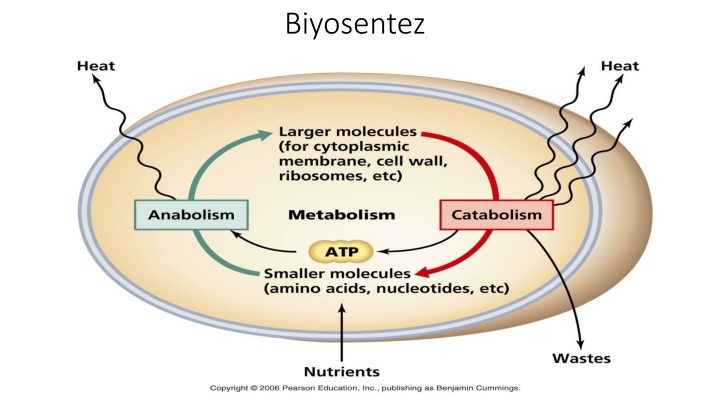
Biological Synthesis Processes and Nitrogen Fixation Insights
Explore the intricate processes of biological synthesis for compounds such as carbohydrates, amino acids, nucleotides, fatty acids, and lipids. Dive into the world of nitrogen fixation to uncover the mechanisms that enable nitrogenase protection in organisms like Azotobacter vinelandii and Anabaena cyanobacterium.
Download Presentation

Please find below an Image/Link to download the presentation.
The content on the website is provided AS IS for your information and personal use only. It may not be sold, licensed, or shared on other websites without obtaining consent from the author. If you encounter any issues during the download, it is possible that the publisher has removed the file from their server.
You are allowed to download the files provided on this website for personal or commercial use, subject to the condition that they are used lawfully. All files are the property of their respective owners.
The content on the website is provided AS IS for your information and personal use only. It may not be sold, licensed, or shared on other websites without obtaining consent from the author.
E N D
Presentation Transcript
eker ve polisakkarit biyosentezi ekil. a) polisakkaritler UDPG gibi heksozlar n aktive edilmi formlar ndan sentezlenir. b) Glukoneogenezis. Glukoza ihtiya duyuldu undadi er karbon kaynaklar ndan glukoz sentezlenebilir ve bu ama la baz glikoliz reaksiyonlar ters y nde al r. c) n kleik asit sentezi i in gerekli olan pentoz ekerleri glukoz-6-fosfat gibi heksoz ekerlerinin dekarboksilasyonu ile meydana gelir.
Nkleotit biyosentezi Figure. Biosynthesis of purines (a) Components of the purine skeleton. (b) Inosinic acid, the precursor of all purine nucleotides.
Nkleotit biyosentezi Figure. Biosynthesis of purines (c) Components of the pyrimidine skeleton, orotic acid. (d) Uridylate, the precursor of all pyrimidine nucleotides. Uridylate is formed from orotate following a decarboxylation and the addition of ribose 5-phosphate.
Nitrojenaz Figure. Protection of nitrogenase in Azotobacter vinelandii and in the cyanobacterium Anabaena. (a) Transmission electron micrograph of nitrogen-fixing cells of A. vinelandii grown with 2.5% O2; very little slime is evident. (b) Cells grown in air (21% O2). Note the extensive darkly staining slime layer (arrow). The slime retards diffusion of O2 into the filament, thus preventing nitrogenase inactivation by O2. (c) Fluorescence photomicrograph of a cell of the filamentous cyanobacterium Anabaena showing a single heterocyst (green). The heterocyst is a differentiated cell that specializes in nitrogen fixation and protects nitrogenase from O2 inactivation.
Nitrojenaz testi: Asetilen redksiyonu (ARA testi - A Acetylene R Reduction A Assay)
